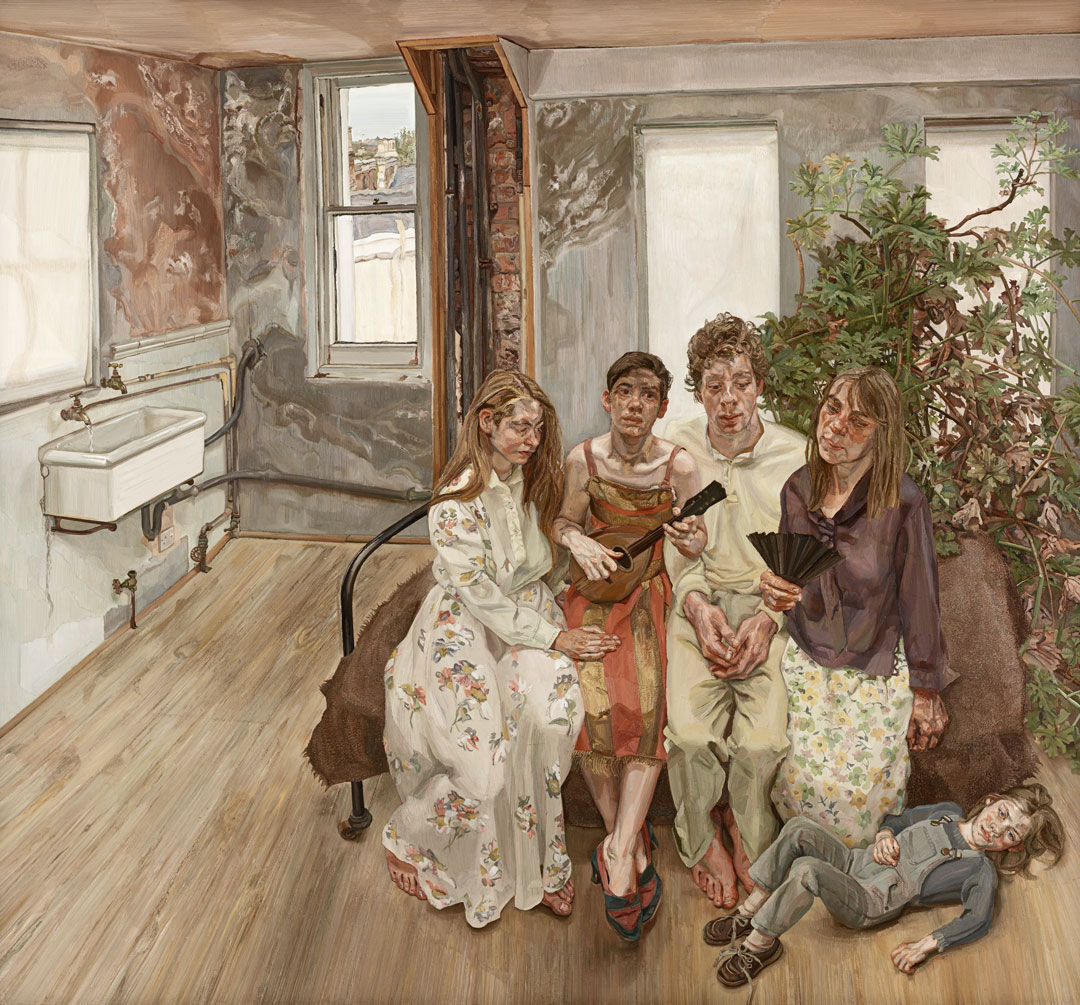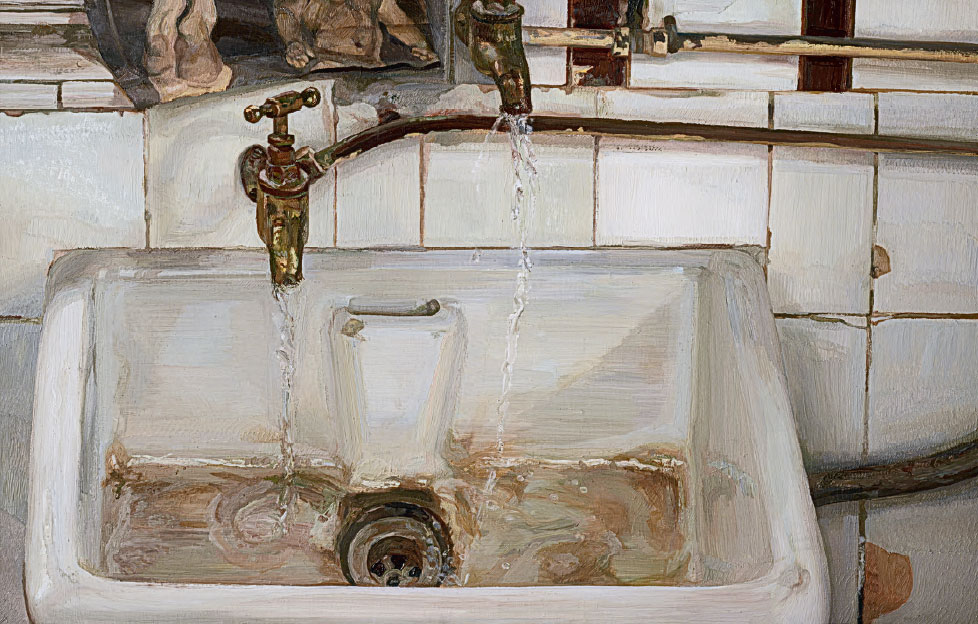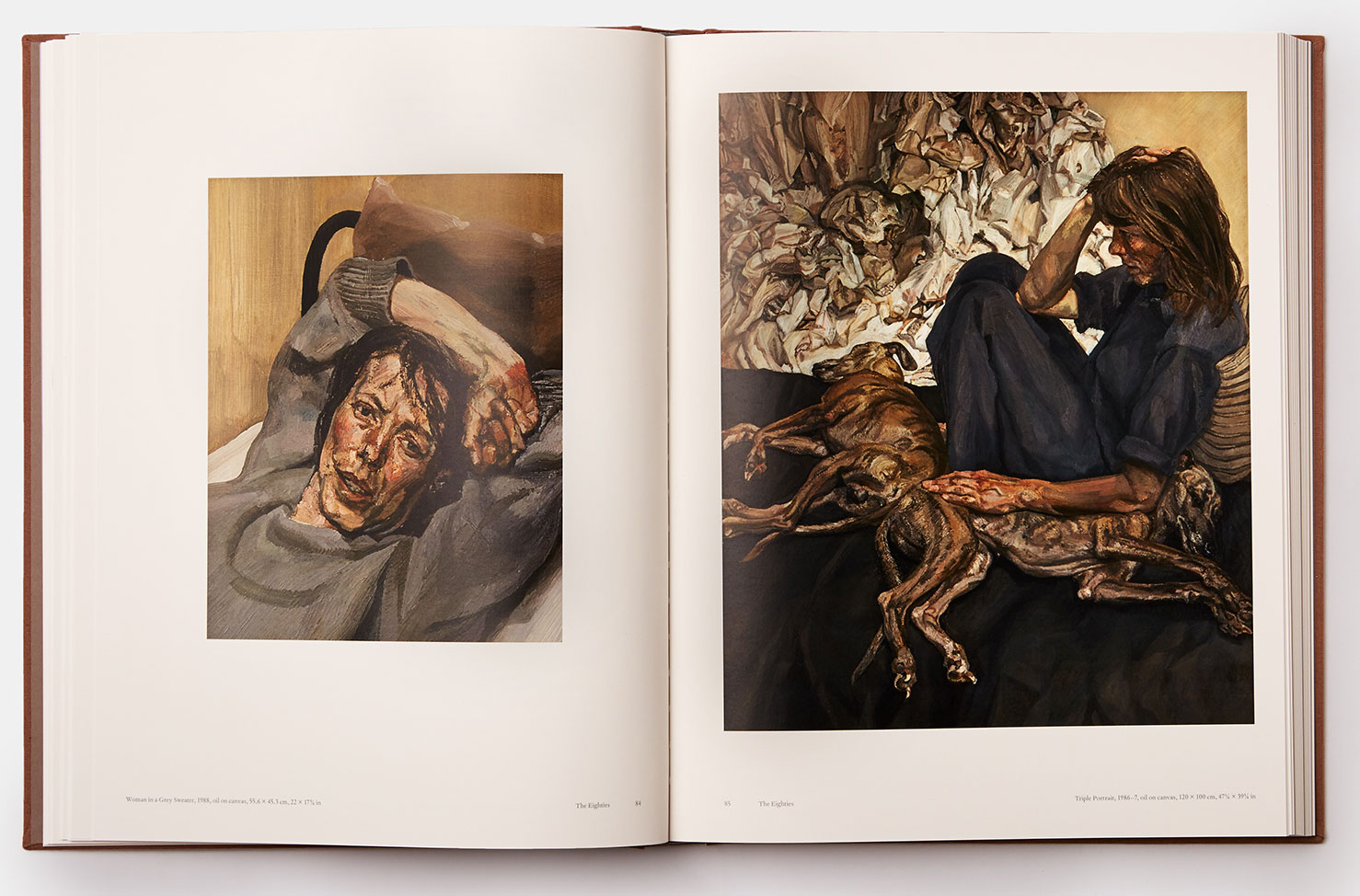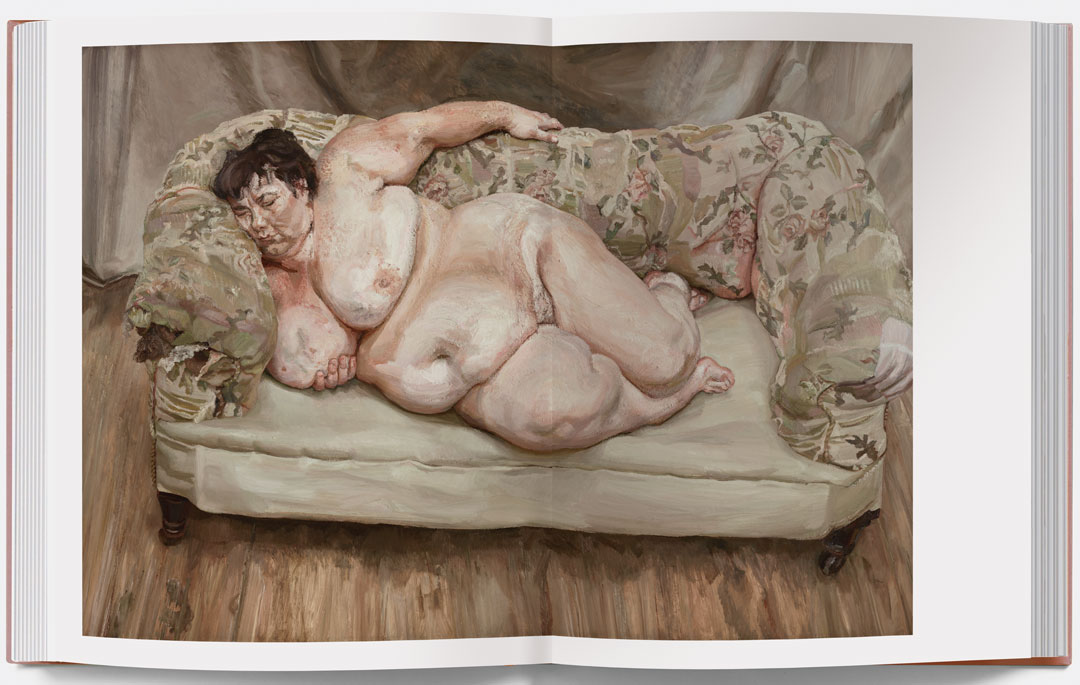
The beauty in Freud’s battered interiors
The bare pipes and elegantly worn interior setting of Freud's studio were a key element in his paintings
When the British newspaper journalist and editor Geordie Grieg finally met Lucian Freud at the painter’s home in West London in the 1990s, he was struck by not only the great artist’s presence, but also his surroundings. It was as if he had stepped into "Freudland… all so familiar from the paintings – bare floorboards, torn sheets piled up, rickety kitchen chairs, a decadent sense of neglect".
That decadent neglect will be a familiar to many other followers of Freud. As Martin Gayford writes our new, two-volume book on Lucian Freud, “the chairs and sofas that appear again and again in Freud’s pictures were of high quality but aged, with torn covering and wisps of stuffing sticking out – like the one on which Benefits Supervisor Sleeping rests. Where not caked with palette scrapings, the walls of his studios were bare and cracked. Reviewing Large Interior W11 (after Watteau) the critic of the Daily Telegraph described the setting of the picture – Freud’s Holland Park studio – as ‘a sordid room’ with ‘peeling walls, a nasty sink and the sort of all-too-visible plumbing the English are prone to accept.’ That ‘nasty’ basin was the subject of one of Freud’s most beautiful still lifes, Two Japanese Wrestlers by a Sink, a picture of water in motion and thus an image of time passing. Sordidness, like beauty, is in the eye of the beholder.”

Not everyone appreciated the colour of Freud’s interiors. Gayford reports that fellow sitters Angus Cook and Cerith Wyn Evans, suggest the colourful, flamboyantly dressed performance artist Leigh Bowery as a subject, because, Gayford quotes Wyn Evans as saying, “We thought we ’d get Lucian to put that old beige paint away.”
That ruse backfired; Bowery, stripped of his clothes, makeup and piercings, became one of Freud’s most successful subjects. Other, more pointed suggestions to alter the look of Freud’s interiors were equally ineffective. The socialite and Freud sitter “Jacquetta Eliot remembered how one day in the1970s, Francis Bacon came round to the studio in Gloucester Terrace. ‘Lucian was really wanting Francis to say his work was good or interesting. And Francis rolled up his sleeves and said, “I think you should throw a bucket of paint all over the floorboards!”’

The floorboards were never violently repainted, nor did Freud adopt another popular painting technique of executing his works out-of-doors, perhaps because the artist’s studio, with its old chairs and bare boards, served as a comfortable inner sanctum.
“From early on, Freud had had an aversion to working outside en plain air,” writes Martin Gayford. “This was partly to do with light, he explained. ‘I never work in direct sunlight because I can’t see properly in it, I can’t see the forms sufficiently.’ It was also to do with his love of privacy, a ‘feeling about other people, with not wanting to be watched’.”

For more on this monumental artist’s life and work, order a copy of our new two-volume publication, Lucian Freud, here.